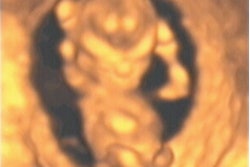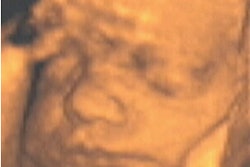(Ultrasound Review) Radiologists and surgeons at William Beaumont Hospital in Royal Oak, MI, set out to ascertain the ultrasound features of partial-thickness and complete tears of the quadriceps tendon. Dr. Samuel La and colleagues also determined whether sonography could aid the diagnosis of such injuries.
According to the authors, partial tendon tears are difficult to diagnose clinically because symptoms can be variable. Early detection of complete and extensive partial tears can lead to prompt surgical repair and simplified surgery.
The sonographic findings in 389 patients were reviewed. Seven cases required surgical repair and the surgical and sonographic findings were compared. "Because tendinosis and partial tears often cannot be distinguished by imaging or clinical examination, surgical findings were chosen as the reference standard to provide the highest possible accuracy and strongest assessment of the sonographic findings," they wrote.
When all three layers of the quadriceps tendon were completely fractured with separation of the tendon edges, a complete tear was diagnosed. When a focal defect involving only one or two layers was demonstrated, a partial tear was diagnosed.
Four partial tears and one of two complete tears were correctly diagnosed sonographically. "One complete tear was described as a partial tear on the basis of sonography. In a seventh case, complete disruption of the extensor mechanism with osseous avulsion of the superior pole of the patella was identified correctly," they reported.
Dynamic scanning involving flexion and extension of the knee was found to be useful, and there was one partial thickness tear that only was evident when the knee was extended.
The authors concluded, "Sonography, including the use of dynamic evaluation, was helpful in the diagnosis of partial-thickness tears of the quadriceps tendon and may aid in differentiation of such cases from complete quadriceps tendon tears, particularly in the acute setting."
The sonographic differentiation of complete and partial thickness tears was more difficult in chronic injury where scar tissue had formed. They recommended large-scale research to determine the accuracy of sonographic detection of quadriceps tendon tears.
Sonography of partial-thickness quadriceps tendon tears with surgical correlationSamuel La, et. al.
William Beaumont Hospital, Royal Oak, MI
J Ultrasound Med 2003 December; 22:1323-1329
By Ultrasound Review
January 30, 2004
Copyright © 2004 AuntMinnie.com



















